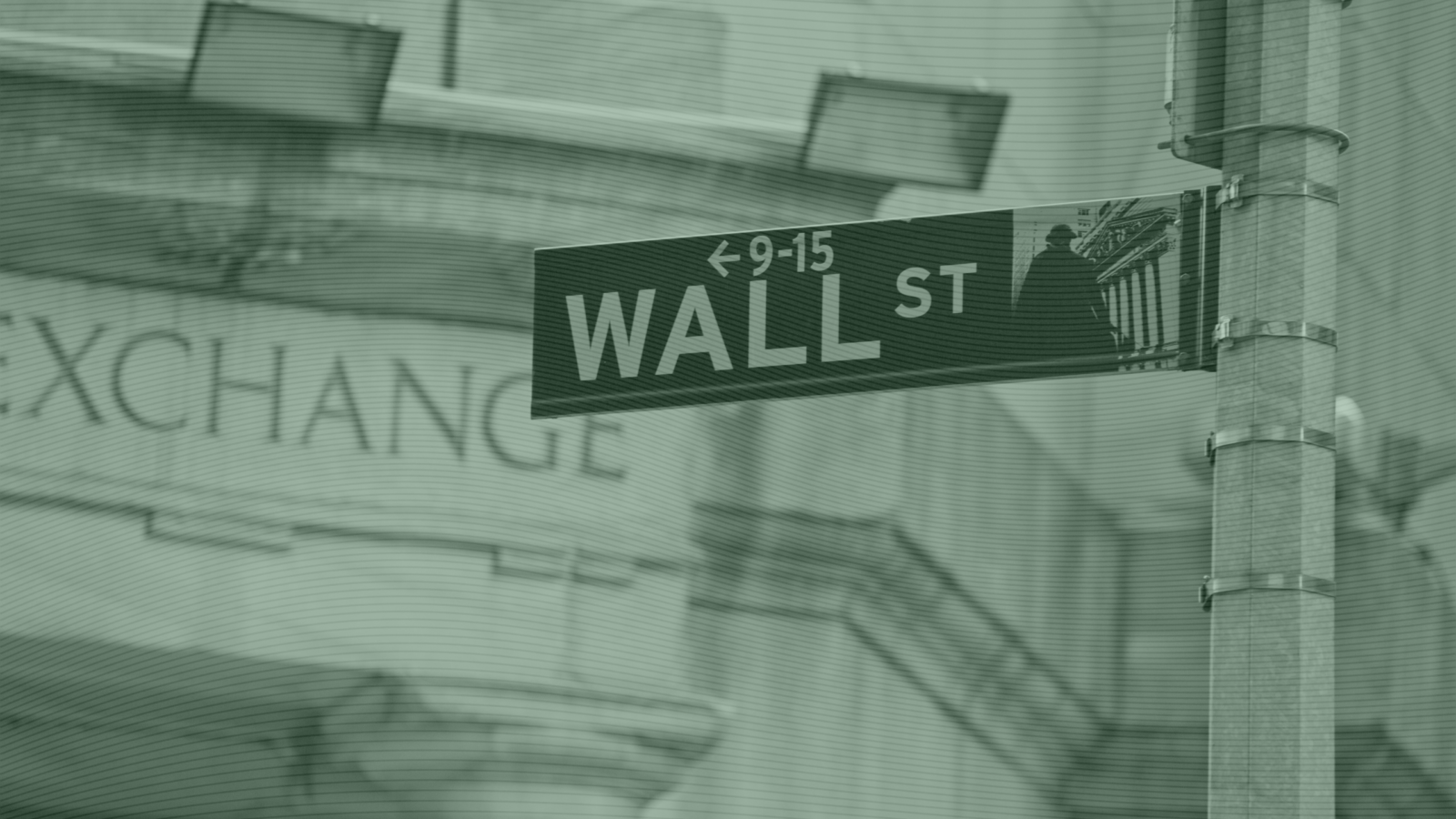Good morning.
In the old days, fraudsters cashed forged checks, assumed a new identity, and went on the lam. Now, they just post about it on social media.
A viral TikTok video last week showed customers taking advantage of an ATM glitch that allegedly allowed customers to deposit self-written checks worth more than their account balances and walk away with the extra green. Long lines formed outside Chase branches as hundreds of customers waited to try their hand at the magical money machines. Some enterprising customers even cashed “obscene” amounts, forcing the bank to reportedly turn the cases over to police.
While the alleged scammers were calling it “free money,” authorities generally use the term “check fraud.”
Hedge Funds Are Falling out of Favor with the World’s Wealthy

Some of the world’s wealthiest investors are saying sayonara to hedge funds.
A growing number of family offices and high-net-worth clients are reportedly kicking their traditional hedge funds to the curb in favor of higher-yielding, and less expensive, investing options elsewhere. The funds have been run-of-the-mill on average this year, and even failed to outperform the S&P 500, according to new research from alternative investment data provider Preqin. That’s been a hard sell for the world’s wealthy.
More than a third (35%) of the 185 institutional investors surveyed told the data provider they would pull back the proportion of their investments in hedge funds by as much as 10 percentage points this year. “They’re starting to move away from hedge funds in favor of alternative assets and private placements,” said Robert Hodgins, founder of private equity firm Sand Hill Road. “There’s been a noticeable shift.”
Livin’ on the Hedge
Hedge funds on average returned just 6% at the midpoint of this year and lagged behind many of the important benchmarks, according to the report. The S&P 500 climbed as much as 15% over the same time frame — a fact that wasn’t lost on the wealthiest investors.
But there’s also a desire for more control, transparency, and diversification, Hodgins said. Some of the world’s upper crust have found alternative strategies can allow for more customized approaches with potentially lower fees. “It’s posing a real challenge to the traditional hedge fund model,” he told The Daily Upside. “Given the economic uncertainty we’re facing, this could be a lasting change.”
For Matt Willer, managing director of Capital Markets and partner at Phoenix Capital Group, the advantages are higher returns, much lower fees, and more defined returns without the need to worry about market volatility. “We are seeing this trade every day,” Willer told The Daily Upside.
Hedge Hogs. Make no mistake, hedge funds are still a dominant investment category globally for the wealthy. Total combined assets topped $4.5 trillion worldwide last year, according to the Alternative Investment Management Association. But those investments have been in a somewhat steady decline in recent quarters:
- There were 7,682 global investors in hedge funds at the end of last year with 29,876 total funds worldwide.
- Assets in hedge funds declined $27.6 billion in the fourth quarter of last year alone.
“[There’s] a reallocation from the growth stories that have walked up the indexes, into the private asset classes that deliver more consistent non-market correlated, and attractive, absolute returns,” Willer said.
Fill Your Calendar with Exclusive Virtual Appointments
Imagine having a pipeline of qualified prospects, ready to meet with you via video, available with just one click. With Money Pickle, the hassle of traditional lead gen is gone—now it’s about claiming the appointments you want, when you want.
You hand select the appointments that fit your ideal client profile, with no obligations or minimum spend required. Plus, new prospects are available daily, giving you the flexibility to grow your business at your own pace.
Money Pickle handles the logistics, so you can focus on what you do best: providing personalized financial advice. Whether it’s financial planning, investing, or retirement guidance, they can help you connect with the right clients.
Ready to streamline your client acquisition?
Join Money Pickle today and start claiming appointments on your terms.
Morgan Stanley Converts Mutual Funds into First ‘Pathway’ ETFs

Morgan Stanley is charting a new path forward with its latest funds.
The New York-based investment bank announced it is converting two of its mutual funds with a combined $3 billion in assets into its first exchange-traded funds under the “Morgan Stanley Pathway” banner, according to a filing with the Securities and Exchange Commission.
The $2.5 billion Pathway Large Cap Equity Fund and $453 million Pathway Small-Mid Cap Equity Fund will be reorganized into ETFs that are expected to begin trading on the New York Stock Exchange in November.
Mutual Friends
Morgan Stanley Pathway was built on offering attractive mutual funds, so transforming two of its portfolios into ETFs is definitely a shake-up for the brand. However, the bank’s board unanimously approved the reorganization, calling it “an attractive opportunity for asset growth” and citing trading flexibility, increased transparency, and enhanced tax efficiencies for the conversion. Portfolio managers will stay the same once the conversion happens:
- The large cap fund has recorded net inflows of $335 million in the past year, while the small-mid cap fund has suffered outflows of $78 million, according to YCharts.
- In addition to the two soon-to-be ETFs, Pathway contains nine other funds, including the $162 million Alternative Strategies Fund and the $1.3 billion International Equity Fund.
ETFs In, Mutual Funds Out: Morgan Stanley first started playing the ETF field in February 2023 when it launched six under the Calvert brand. Later that year, it filed for its first mutual fund-to-ETF conversion. The firm currently oversees 15 ETFs.
This February, Morgan Stanley took a page out of Vanguard’s book, filing for an ETF multi-share class structure, which would allow the firm to offer ETF share classes of its mutual funds. It’s a strategy the likes of Dimensional, Fidelity, Cboe Global Markets, and more have been looking to adopt, too.
Active ETFs Approach $1 Trillion in Global Assets
Active ETFs may be about two decades old, but they’re starting to hit their stride.
Global assets in active ETFs are expected to grow to $1 trillion soon, per ETFGI data. The investment vehicles, which try to outperform the market, had reached $974 billion in assets at the end of July, and could soon enter tredecuple — that’s 13 — digits.
Rules of the Game
Active ETFs have all the advantages of regular ETFs — low costs, flexible trading, liquidity — with the added benefit of being actively managed, similar to mutual funds. The momentum behind active products took off after the Securities and Exchange Commission passed a rule in 2019 allowing ETFs to come directly to market without the cost and delay of obtaining an exemptive order. Currently, there are roughly 13,200 active ETFs globally, and they accounted for 70% of all US-listed launches in 2024 through June, according to BlackRock.
After the SEC ruling, managers flooded into the active space, according to Dimensional Fund Advisors co-head of product specialists Rob Harvey. “It allowed for ETFs to have non-pro rata baskets; you could have custom baskets, which is a game-changer for anyone looking to launch an ETF,” he told The Daily Upside.
Rules of Engagement. The rule also required ETFs to disclose daily holdings, historical information regarding premiums and discounts, and bid-ask spread information. That transparency has helped make active ETFs more attractive to investors. Active ETFs’ five-year compound annual growth rate of 52% is more than three times the rate for passive ETFs, according to State Street.
“There is transparency into the underlying holdings, which means transparency into the underlying strategies as well,” said Matt Kaufman, head of ETFs at Calamos Investments. “Historically, a lot of mutual fund managers wouldn’t really disseminate their strategies. There are quarterly holdings reports, but in between that, they could do a lot.”
- Global assets in active ETFs have increased roughly 32% year-to-date, according to ETFGI.
- During July, they gathered net inflows of $36 billion, bringing year-to-date net inflows to $190 billion — the highest on record.
- Some of the biggest players in the active ETF space include Dimensional, American Century Investments, BlackRock, and JPMorgan Chase, whose Global Select Equity ETF has seen its adoption rate among RIAs surge 2,200% in less than a year, according to YCharts.
Feeling’s Mutual: Though mutual funds still contain about $13.8 trillion in assets in the US alone, they have lost some of their staying power with investors. Over the past decade, actively managed equity mutual funds in the US have bled $2.6 trillion in outflows, according to the Investment Company Institute, some of which can be attributed to investors moving money from mutual funds to active ETFs.
Extra Upside
- Ruh, Roh. Popular pundit Bob Doll said the Fed is likely running out of time to hit inflation targets while avoiding a recession.
- Pay the Piper: A securities regulator fined Morgan Stanley $2 million for allegedly failing to properly monitor insider securities sales.
- Looking for More Qualified Appointments? Money Pickle connects you with pre-booked, exclusive appointments with prospective clients. Claim new appointments, daily (no minimums, no requirements). Meet your ideal clients through Money Pickle.*
*Partner
Advisor Upside is edited by Sean Allocca. You can find him on LinkedIn.
Advisor Upside is a publication of The Daily Upside. For any questions or comments, feel free to contact us at advisor@thedailyupside.com.

